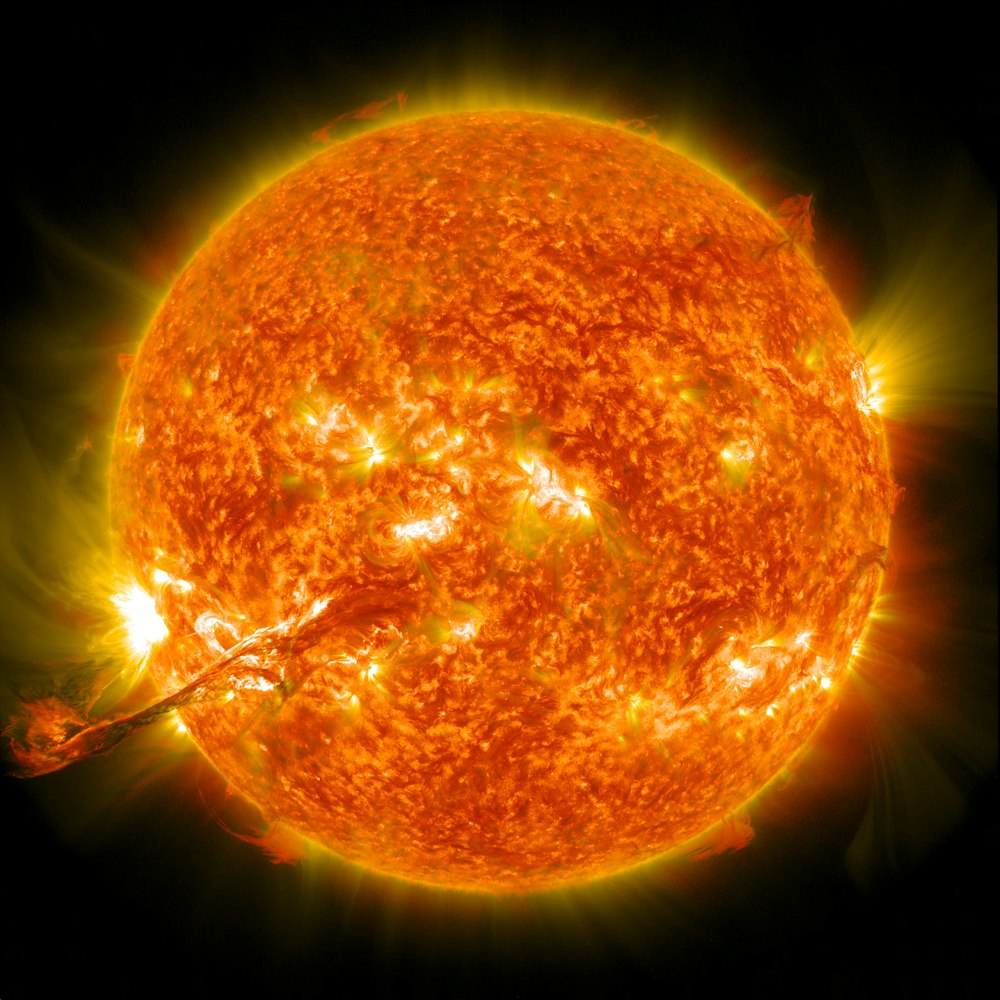Probability of a Carrington Event
How likely is it that a solar storm will take out the grid and knock us back into the Stone Age?
This article will discuss two types of natural disaster: Carrington and Miyake Events.
What is a Carrington Event? It is an intense geomagnetic storm, triggered by a Coronal Mass Ejection (CME) from the Sun colliding with Earth’s magnetosphere. It causes strong displays of Aurora (Northern and Southern Lights) and induces surges of electrical current through electrical cables and equipment. The phenomenon is named after Richard Carrington, the English astronomer who observed the solar flare that unleashed a CME that struck Earth in 1859. The Carrington Event ‘broke’ our telegraph system, causing short circuits, meltdowns and fires. Some telegraph operators received electric shocks. If such an event were to occur in our technologically advanced civilisation, the consequences would be devastating. The electric grid would be irrecoverable, and billions would die in the famine that would inevitably follow.
What is a Miyake event? Nobody knows for sure. A Miyake event causes a sudden, transient increase in the amount of carbon-14 in the Earth's atmosphere. Evidence for this has been found in tree rings and ice core samples. Miyake events are thought to be caused by solar or cosmic radiation—nobody really knows—and are several times more powerful than the Carrington Event. It is estimated that a Miyake event occurs on average once every 1,000 years. Miyake events may last weeks, months or even years.
In July, 2012, an ultra fast Carrington-level CME missed Earth by just 9 days. In March, 2023, another huge CME spewed off the back of the Sun and hit Mercury.
This estimate of the probability of a Carrington-level event is based on a review of published papers which are themselves based on solar observations over the last several decades or centuries. I did not include papers that require purchase, relying only on peer-reviewed papers in the public domain. On skimming through these documents, I did not notice any authors take into consideration the fact that, as of 2013, Earth’s protective magnetic field was down 15% and collapsing at 5% per decade. All of the studies appear to be retrospective. It is interesting to note that, since 2019, probability estimates have become considerably more optimistic, which begs the question, what on Earth happened to pessimistic viewpoints? Are they getting through the peer review process?
In other articles, I’ve cited a 4% chance of a Carrington Event during each year of a solar maximum. To this humble physics graduate, that estimate now appears too optimistic. With Earth’s magnetic field only functioning at or below 80%, our technologically advanced civilisation is considerably more vulnerable to solar storms. Consequently, I believe that we are now facing a greater than 10% probability of a Carrington Event during the current 2024/2025 solar maximum, which is shaping up to be a little rougher than anticipated.
Timeline of Estimates of Probability of a Carrington Event
2012 (February) Riley, P. estimated that the probability of another Carrington event occurring within the next decade was approximately 12%.
2012 (May) Love, J.J. calculated that the most likely Poisson occurrence probability for another Carrington event in the next 10 years was 6.3%.
2013 (March) Kataoka, R. estimated that the probability of a Carrington-level storm occurring within the next decade was 4–6%.
2016 (December) Riley, P. and Love, J.J. estimated that the probability of an extreme geomagnetic event comparable to the Carrington Event occurring within the next 10 years is 10.3% with a 95% confidence interval.
2019 (February) Moriña, D., Serra, I., Puig, P. et al. estimated that the probability of an extreme event of a magnitude comparable or larger than the well-known Carrington event of 1859 in the next decade is between 0.46% and 1.88% (with a 95% confidence). NB: They used an interesting modelling method that allows for the probability of a Carrington Event to fall with each year that one does not occur. It is not explained how that applies when Earth’s magnetic field is collapsing.
2020 (January) Chapman, S.C., Horne, R.B., Watkins, N.W. estimated that the probability of a Carrington level storm is 0.7% per year.
2021 (July) Katepalli Sreenivasan, professor of physics, engineering, and mathematics at NYU estimates that the probability of a Carrington-level Event in the 2020s is 2-3%.
Timeline of Estimates of Probability of a Miyake Event
2022 (October) Zhang, Q., Sharma, U. et al predict a 1% probability that we will be hit by a Miyake event in the next 15-20 years.




Been keeping tabs on Archaix Breshears for a while. Phoenix Event 2040s? https://youtu.be/rAheJ_GG6gM?si=LkXUzEDm9LWMaoA6
"Stone age" is a bit hyperbolic. 19th century? Yep. That's more like it. Amish communities will be looking very attractive post Carrington.